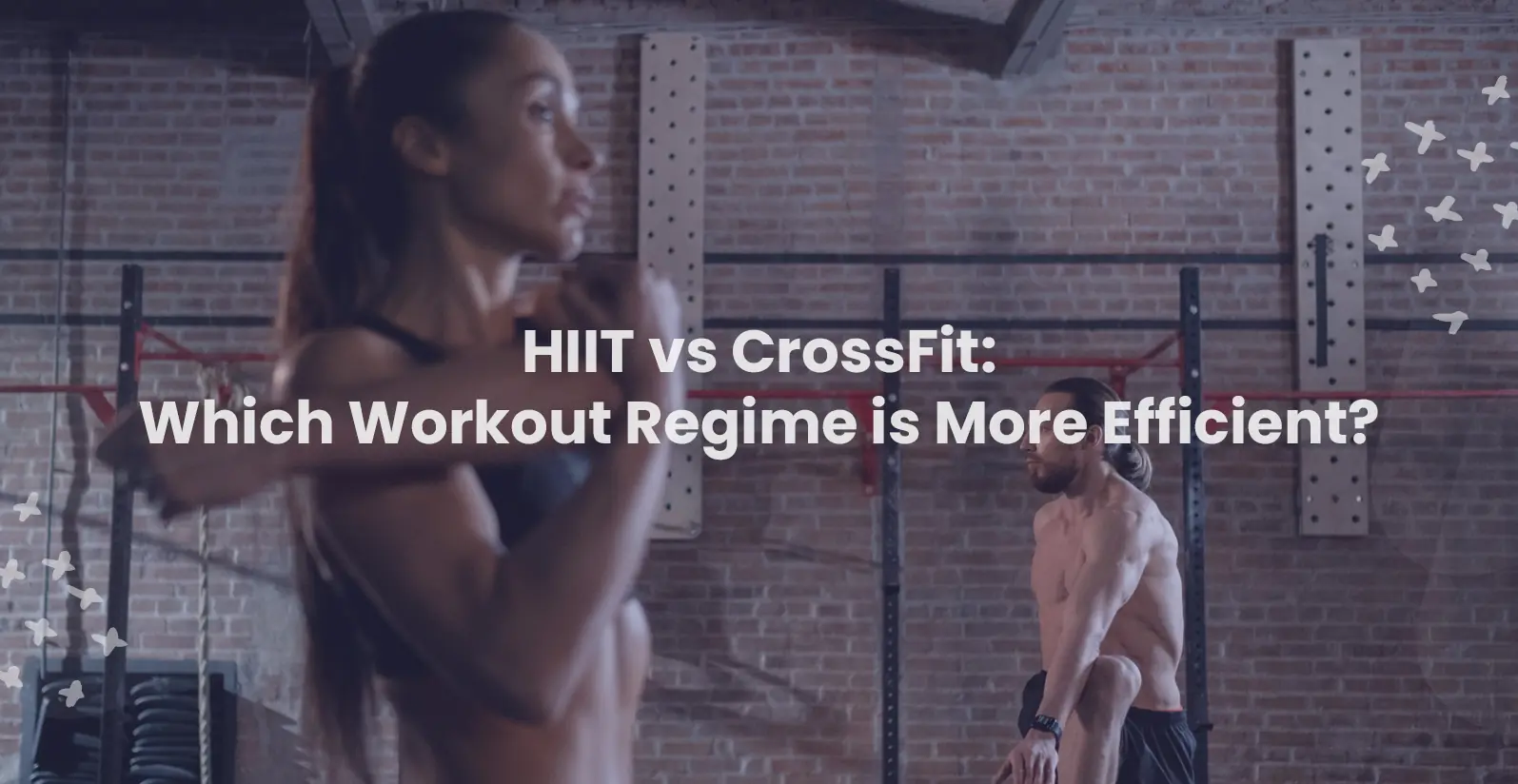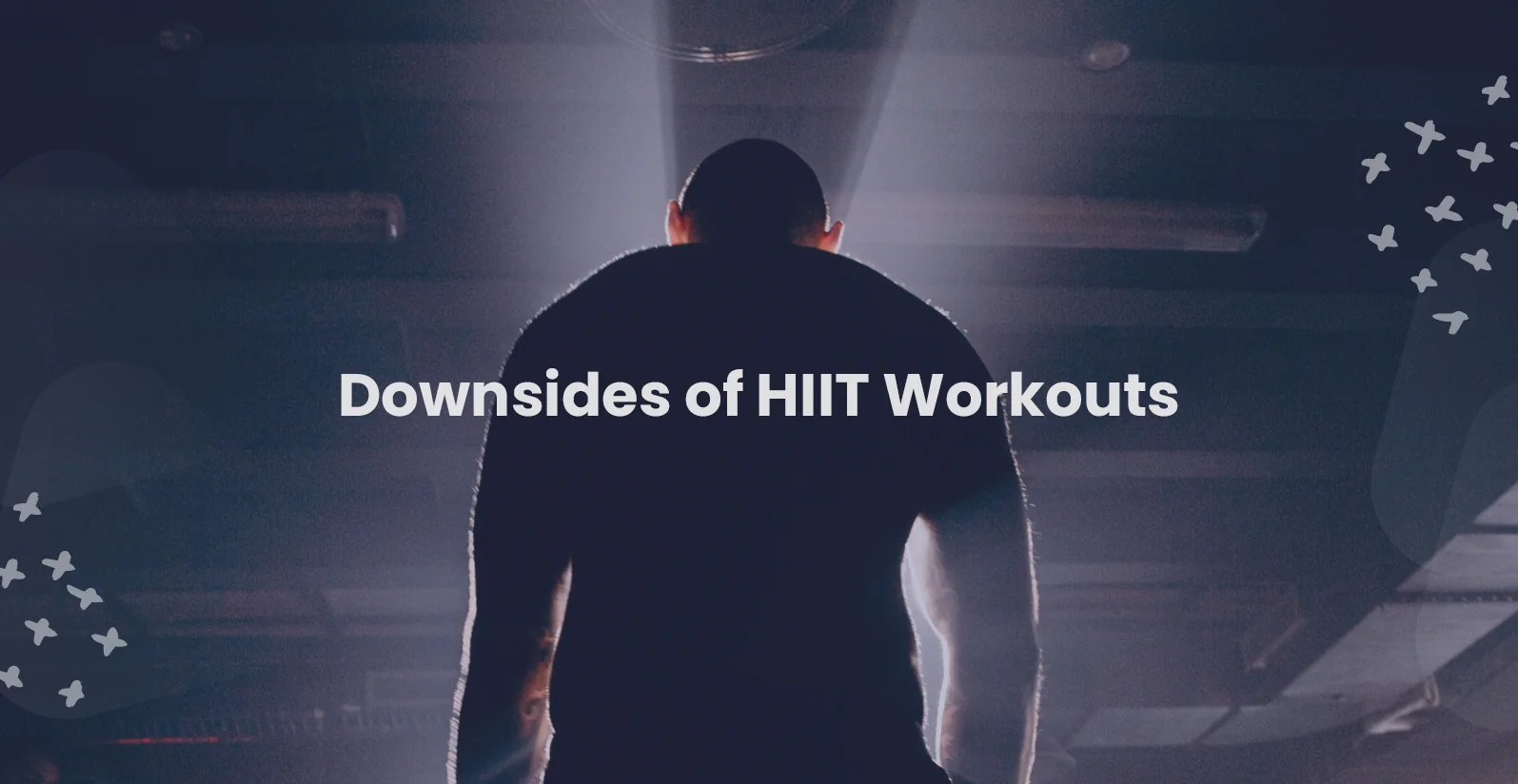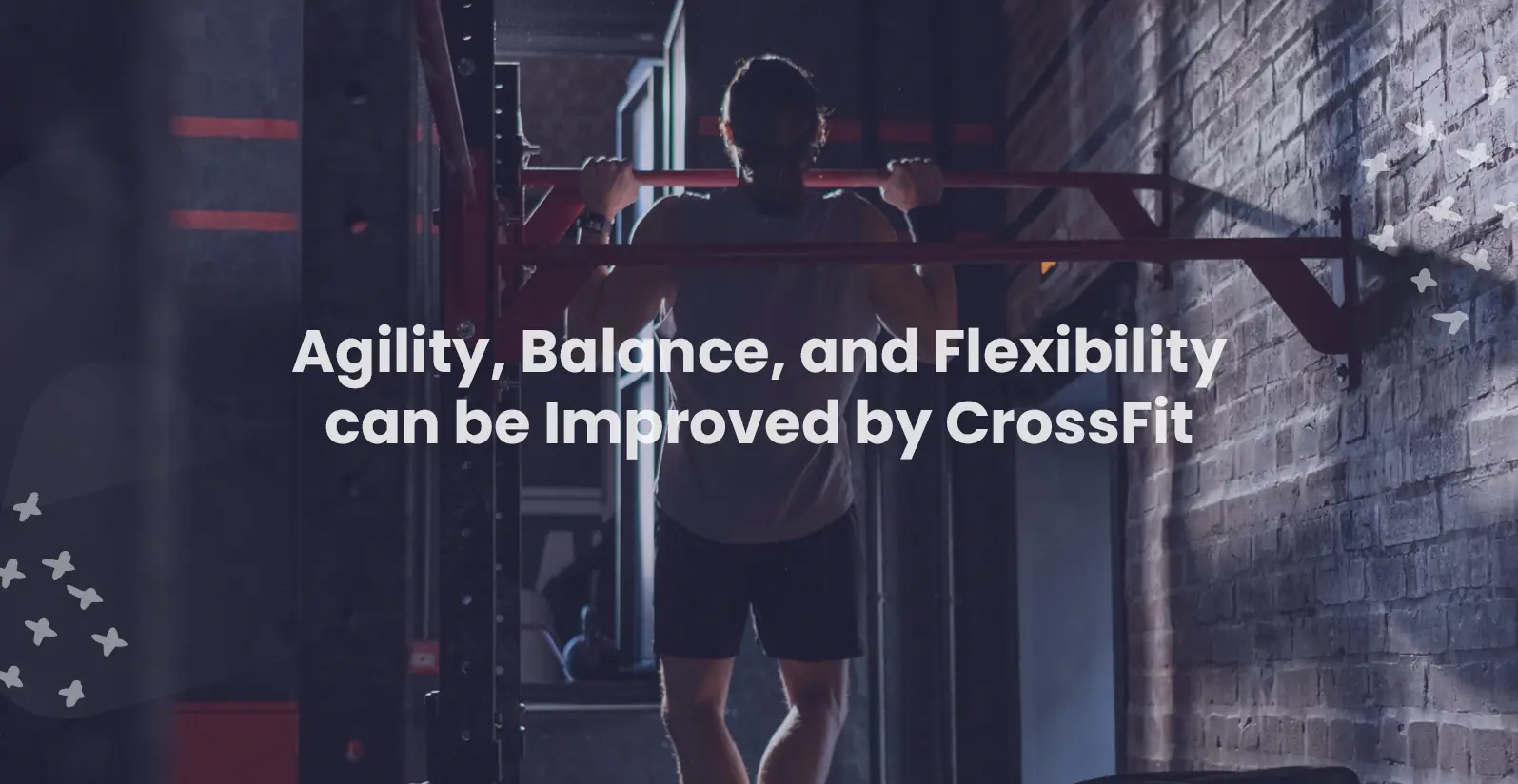
There are a lot of workout routines and fitness lifestyles that a person can choose from for improving fitness levels. The most popular ones include High Intensity Interval Training, CrossFit, and even Bodybuilding. While there are a lot of benefits in doing each of them, some people may still find it hard to pick one that suits their needs best. To help you decide between HIIT and CrossFit, we've put together a comparison article that will guide you through the pros and cons of each workout routine.
HIIT vs. CrossFit: What is High Intensity Interval Training (HIIT)?
High Intensity Interval Training (HIIT) is an increasingly popular form of exercise that has been gaining attention in recent years. HIIT combines short bursts of intense cardiovascular activity with periods of rest in between for maximum benefit and efficiency. It is a type of interval training where participants perform short, high-intensity exercises at their maximum effort for a period of time followed by quick rest intervals.
HIIT is effective because it helps to increase fat burning as well as overall metabolic rate and can be done anywhere, anytime with minimal equipment needed. It also helps to improve heart health, muscle strength, endurance and coordination. The intensity level can be easily adjusted by changing the duration and frequency of the exercise intervals accordingly. HIIT exercises have been proven to provide significant improvements in aerobic capacity and muscular endurance while reducing fatigue during workouts compared to traditional types of cardio or strength training alone.
Workout Frequency and Intensity of HIIT
HIIT is based on short bursts of intense activity followed by periods of rest or active recovery. This type of training increases athletes' aerobic capacity and improves their overall endurance levels. When it comes to workout frequency for HIIT, experts recommend that individuals practice this style of exercise three times per week at a minimum. For example, individuals who are just beginning a HIIT program might practice it three times per week for six to eight weeks. After this training period, they may reduce the frequency of their workouts to two or three days per week for maintenance purposes.
What are the Advantages of Doing HIIT Workouts?

HIIT Improves Stamina
HIIT, or High Intensity Interval Training is quickly becoming one of the most popular exercises for people looking to improve their stamina. HIIT combines bursts of high intensity activities with short periods of rest, forcing your body to work harder than it would while doing steady state cardio. By pushing your body to its limits through HIIT, you can see increases in aerobic capacity and overall endurance.
HIIT Increases Strength Levels
HIIT increases strength levels, making it a popular exercise regime choice for many. High intensity interval training (HIIT) is an intense, full-body workout that combines periods of high intensity activity with bursts of recovery. It has been proven to be incredibly effective in getting the maximum results in minimal time. HIIT workouts improve overall strength and endurance. They are also beneficial for burning fat and building muscle mass quickly. In comparison to other more traditional forms of exercise such as CrossFit, HIIT offers a great way to build muscle fast without having to spend hours in the gym doing so.
HIIT Can Burn Unwanted Fat
HIIT is a type of exercise that involves short bursts of intense activity followed by periods of rest, and it can help you burn unwanted fat quickly and efficiently. The popularity of HIIT has sparked debates on which workout regime is more efficient: HIIT or CrossFit? In this article, we will compare the two to find out which one can help you get rid of those extra pounds faster. HIIT is a prime choice for those who are looking to burn fat, because it helps you burn calories even after your workout is over. You can burn more calories during your HIIT workout than with other types of exercise, so overall, you will get better results from doing HIIT.
Fat Continues to Burn After a HIIT Workout
Fat continues to burn after a HIIT workout even hours or days after the exercise session has been completed. This phenomenon, known as "after-burn" or "excess post-exercise oxygen consumption (EPOC), is why HIIT workouts are quickly becoming more popular than CrossFit for people who are looking for efficient weight loss results.
HIIT stands for high intensity interval training and involves ultra-intense bouts of movement with periods of rest in between. During the workout, your body reaches maximum exertion levels that can't be sustained over long periods of time. This places strain on the body causing it to use up oxygen faster than normal and creating an EPOC effect afterwards when the body tries to restore itself back to its pre-workout state.
HIIT is Good for the Heart
HIIT (High-Intensity Interval Training) is one of the best workouts for your heart. It provides a combination of aerobic and anaerobic conditioning, which helps to reduce the risk of cardiovascular disease. Studies show that HIIT can help to improve overall health, reduce blood pressure and cholesterol levels, as well as boost metabolism and weight loss.
The main benefits of HIIT include improved endurance, enhanced oxygen intake, increased fat burning capacity and reduced risk for chronic illnesses such as diabetes, stroke and hypertension. Compared to CrossFit – another popular exercise regimen – HIIT may be more efficient at improving heart health due its intense intervals. By alternating between short bursts of high intensity exercises followed by rest periods, it offers a great way to get in shape quickly while also protecting your heart from damage caused by long-term physical activity.
Downsides of HIIT Workouts

HIIT (high-intensity interval training) workouts are becoming more and more popular, but they are not without their own set of risks. HIIT workouts involve performing short periods of intense exercises followed by rest periods. This intense form of exercise can be very beneficial for improving fitness levels, but it also puts a lot of strain on the body and can lead to injuries if done incorrectly or too often.
One downside to HIIT is that it is a very demanding type of workout. A person needs to be in good physical condition before engaging in any sort of high-intensity exercise. If a person does not have the proper knowledge or guidance from an experienced trainer, they may injure themselves due to pushing their body too hard. Another downside of HIIT is that it is very difficult to learn how to do it correctly on your own. There are many ways to perform HIIT workouts, but the correct way for each person needs to be learned through proper training and experience.
HIIT vs. CrossFit: What is CrossFit?
CrossFit is a type of exercise regimen that has grown in popularity over the last decade. It combines high-intensity intervals of strength training, gymnastics, and core exercises. Even though both HIIT (High Intensity Interval Training) and CrossFit are effective workout regimes for improving physical fitness, many people are still unaware of what CrossFit is.
CrossFit workouts incorporate functional movements to build strength and improve overall fitness levels. The aim of this type of exercise routine is to develop a combination of power, speed, coordination, agility, balance, flexibility and endurance - all in one session! Workouts typically involve an emphasis on quality rather than quantity with the intention being to provide maximum benefit from each movement or activity performed.
Workout Frequency and Intensity of CrossFit
Let us explore the effects of workout frequency and intensity on the effectiveness of CrossFit.
CrossFit is an intense form of training that combines weights, endurance exercises, and other dynamic movements into high-energy workouts. The most common type of CrossFit workout consists of three or more days per week with each session focusing on a particular area (strength, cardio, etc.). Workouts can range from short movements to long ones lasting up to an hour depending on the individual’s experience level. When it comes to intensity levels for CrossFit workouts, they tend to be very challenging but with proper technique can also yield great results quickly.
What are the Advantages of Doing CrossFit Workouts?
CrossFit Improves Physical Strength
CrossFit has gained a lot of popularity in recent years as an effective physical exercise regime that helps to improve strength, flexibility, and endurance. It is a combination of aerobic exercises such as running and weightlifting with high-intensity interval training. CrossFit incorporates several different exercises into each workout session, which helps people reach their fitness goals much faster than if they were using a traditional gym routine.
CrossFit is designed to increase intensity levels over time, making it ideal for those looking to build muscle mass and improve overall strength. It can also help athletes prepare for competition by pushing them to their limits with intense workouts. CrossFit is known to be an effective way of increasing the body's power output since it combines explosive movements with heavy weights and fast reps - this means that practitioners can expect significant gains in their physical strength within short periods of time.
CrossFit Can Improve Aerobic Fitness
CrossFit has gained a lot of traction in the fitness world for its ability to increase strength and power. But what you might not know is that CrossFit can also help improve aerobic fitness. HIIT, or high intensity interval training, is another popular exercise regimen, but how does it compare to CrossFit in terms of aerobic health? This article will take a closer look at the two programs to assess which one offers superior results when it comes to improving overall aerobic fitness. We will examine how each workout affects your cardiovascular system, muscles, energy levels and endurance, so you can make an informed decision about which workout would be best for you. So if you want to learn more about how HIIT and CrossFit stack up against each other when it comes to improving your aerobic fitness, read on!
Agility, Balance, and Flexibility can be Improved by CrossFit

Agility is improved through exercises such as box jumps or burpees which require quick bursts of energy to be able to complete them efficiently. Balance can also be boosted by movements such as push-ups or kettlebell swings which require precision and stability to complete correctly. Finally, flexibility can be increased through activities like stretching or yoga poses which focus on stretching the entire body’s muscles for long periods of time. All of these exercises work together to form a full-body workout that will not only benefit physically but mentally as well.
CrossFit Can Burn Calories and Fats
CrossFit can be an effective means to burn calories and fat, making it attractive for those who are looking for a comprehensive workout program. So how does CrossFit compare to other exercise programs like HIIT (High-Intensity Interval Training)?
HIIT is another type of intensive training program characterized by short bursts of high-intensity activities. In comparison with CrossFit, HIIT may offer more efficient calorie burning because the intensity level is higher and the sessions shorter; however, CrossFit may be preferable for those desiring a longer workout session with multiple components that focus on strength training as well as bodyweight exercises. Both have their advantages when it comes to burning calories and fat; which one you choose depends on your individual needs and goals.
CrossFit Can Enhance Cardiovascular Health
The intense and varied exercises of CrossFit can help to improve cardiovascular health, providing a variety of benefits for those looking to increase their overall wellbeing.
By mixing both aerobic and anaerobic exercises, CrossFit workouts target all aspects of the body in a short period of time. This helps to increase the heart rate and improves circulation throughout the body by pushing it past its limits. As well as improving cardiovascular health, regular CrossFit sessions also promote improved muscular endurance, strength and flexibility as well as aiding weight loss.
Regularly participating in CrossFit classes can result in better control over blood sugar levels, lowered cholesterol levels and decreased stress levels; all key components to maintaining good cardiovascular health.
Downsides of CrossFit Workouts
CrossFit workouts are quickly becoming one of the most popular physical fitness regimens, but there are a few downsides to consider. Despite its reputation for intense exercise and positive results, there is an increased risk of injury due to improper form or overtraining. Athletes should be aware that CrossFit requires a certain level of physical confidence and may not be ideal for those who are just starting out on their fitness journey.
Another potential downside is that some CrossFit moves can become repetitive if the same workouts are done too often. This can lead to boredom with the workout routine and may cause individuals to lose motivation after a period of time. It’s important for CrossFit athletes to vary their routine in order to avoid burnout and prevent injuries from occurring due to the same exercise being repeated too often.
HIIT vs CrossFit: Which is Better?
The answer to the question is not as simple as it seems. It will ultimately depend on your fitness goals, personal preferences and what you are looking for in a workout regimen. Both HIIT and CrossFit can be great ways to get in shape and improve fitness. The main difference between HIIT and CrossFit is that HIIT is a form of high-intensity interval training, while CrossFit is a type of functional fitness. If you are looking to improve your fitness, losing weight and toning up, HIIT is a great way to go. It can help you lose fat and get lean muscle mass at the same time. If you are looking to build strength while getting in shape, CrossFit may be more up your alley.